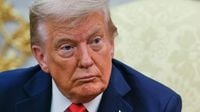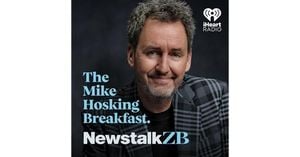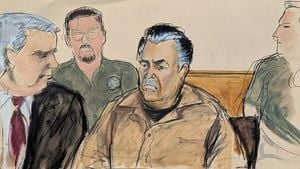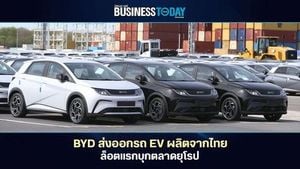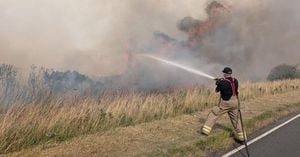South Korean President Lee Jae-myung’s first White House meeting with Donald Trump unfolded this week under the glare of both anticipation and anxiety. The summit, held in the Oval Office on August 25, 2025, came on the heels of heightened political tensions in Seoul and a flurry of social media commentary from Trump himself, who had publicly cast doubt on South Korea’s democracy. For Lee, who was elected in June 2025, the stakes were high—not least because of his aides’ whispered worries about a potential "Zelensky moment," a reference to Trump’s earlier, highly publicized confrontation with Ukrainian President Volodymyr Zelensky at the White House.
As reported by The Independent, Lee admitted, “My aides had worried about a potential 'Zelensky moment' ahead of my first White House meeting with Donald Trump.” He credited his preparation for the encounter, which included reading Trump’s 1987 memoir and business classic, The Art of the Deal, for helping him sidestep any diplomatic pitfalls. “I was confident going into the meeting that I would not face that kind of a situation. That’s because I had read President Trump’s book The Art of the Deal,” Lee explained at a subsequent event at the Center for Strategic and International Studies.
Trump, never one to shy away from drama, had stoked the fire ahead of Lee’s visit. On his social media platform, he posted, “WHAT IS GOING ON IN SOUTH KOREA?” and suggested there was a “Purge or Revolution,” alluding to the prosecution of former president Yoon Suk Yeol for an alleged attempt to declare martial law. He added, “We can’t have that and do business there. I am seeing the new President today at the White House. Thank you for your attention to this matter!!!” According to News18, Trump also told reporters he had “heard bad things” about South Korea’s political situation, remarks that Lee’s team was quick to investigate as rumors, with Trump later describing them as likely a “misunderstanding.”
Despite the tense backdrop, the meeting itself was marked by a surprising display of camaraderie. Lee, who once criticized the presence of U.S. troops in South Korea as “occupying forces” and called trilateral military exercises with Washington and Tokyo a “defense disaster,” adopted a markedly different tone in Washington. As The Independent noted, Lee praised Trump’s handling of North Korea during his first term and expressed hope that Trump could be the peacemaker on the Korean Peninsula. “The only person who can make progress is you, Mr President. If you become the peacemaker, then I will assist you by being a pacemaker,” Lee said, even joking about the prospect of a Trump Tower in North Korea: “I hope you can bring peace to the Korean Peninsula, the only divided nation in the world, so that you can meet with Kim Jong Un, build a Trump Tower in North Korea so that I can play golf there.”
The meeting focused heavily on the future of the U.S.-South Korea alliance, with both leaders touting the need to modernize and strengthen the partnership in response to changing security threats. “Our discussions centered on how to modernize our bilateral alliance to be more reciprocal and future-oriented in line with the changing security landscape,” Lee said, according to News18. Trump, for his part, emphasized the importance of mutual trade, saying, “We love what they do, we love their product, we love their ships, we love a lot of the things they make. In exchange, we can provide oil and gas.”
Yet, beneath the surface, the specter of North Korea loomed large. Both leaders called for talks with Kim Jong Un, but as The Independent pointed out, North Korea has recently affirmed its lack of interest in dialogue with Western adversaries. Lee underscored the importance of the U.S.-South Korea military alliance in countering North Korea’s nuclear threat, warning that Pyongyang’s pursuit of nuclear-armed intercontinental missiles represented an escalating danger. “There is a balance of fear on the Korean Peninsula, but the situation is deteriorating,” Lee warned. He also made clear that Seoul had no plans to develop nuclear weapons.
Trump, meanwhile, repeated his willingness to meet Kim Jong Un later in 2025—but acknowledged that the prospect depended entirely on North Korea’s willingness to engage. “It takes two to tango,” Trump remarked, echoing his oft-repeated sentiment about international diplomacy. He also boasted about his past relationship with Kim, though critics pointed out that, despite the fanfare, there was little concrete progress on denuclearization during his first term. In fact, as The Independent recalled, in December 2019, Kim Jong Un lifted his moratoria on missile and nuclear tests, resuming North Korea’s quest to be recognized as a nuclear-armed state.
Recent developments have only heightened the sense of urgency. In August 2025, evidence emerged of another North Korean missile base near the country’s border with China, with likely missile and military technology support from Russia. This new base, and Pyongyang’s increasingly close ties with Moscow, have raised alarm bells in both Seoul and Washington. Lee’s administration, eager to differentiate itself from conservative predecessor Yoon Suk Yeol, has sought to balance engagement with North Korea and the need for a robust alliance with the United States. Lee even visited Japanese Prime Minister Ishiba Shigeru prior to his Washington trip, attempting to smooth over longstanding tensions between Seoul and Tokyo—a gesture he described as “ironing out the creases” in the relationship, though he acknowledged such efforts are often temporary.
Domestically, Lee faces his own challenges. In July and August 2025, South Korean special prosecutor Min Joong Ki ordered raids on Unification Church sites and affiliated officials as part of an inquiry into multiple accusations involving former first lady Kim Keon Hee, as reported by Yonhap news agency. Seoul police also raided Sarang Jeil Church, led by evangelical pastor Jun Kwang Hoon, who had previously organized demonstrations supporting the ousted Yoon. These developments have fueled political controversy at home and added another layer of complexity to Lee’s diplomatic balancing act.
On the economic front, the two leaders skirted details of a verbal trade deal struck in July 2025, with Trump making clear that the U.S. would not renegotiate. “They had some problems with it, but we stuck to our guns,” Trump declared. “We are going to, they’re going to make the deal that they agreed to make.”
For all the smiles and handshakes, questions remain about Lee’s true intentions and the durability of the U.S.-South Korea alliance. Lee has been described as a political chameleon, capable of shifting his rhetoric and strategy to suit the moment. Whether his charm offensive in Washington signals a lasting commitment to the alliance—or merely a pragmatic effort to secure breathing room for his own agenda—remains to be seen.
As the dust settles on Lee’s first Oval Office visit, one thing is clear: the Korean Peninsula’s future remains as unpredictable as ever, with diplomacy, deterrence, and domestic politics all inextricably linked. The world will be watching to see whether Lee and Trump’s overtures lead to real progress—or simply more of the same old dance.
